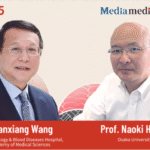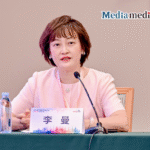
Editor’s Note: The 16th Yan Zhao Breast Cancer Forum recently concluded successfully in Shijiazhuang. This forum focused on cutting-edge, multidisciplinary advances in breast cancer and promoted the standardization of breast cancer diagnosis and treatment. Professor Fei Ma from the Cancer Hospital, Chinese Academy of Medical Sciences, delivered a keynote lecture entitled 'A New Era in Advanced Triple-Negative Breast Cancer: The Trio of Chemotherapy, Immunotherapy, and Targeted Therapy.' Following the session, Oncology Frontier invited Professor Ma for an in-depth interview to discuss strategies for optimizing treatment in advanced TNBC, screening patients most likely to benefit from immunotherapy, and exploring future directions for ADC and other innovative therapies.Q1. The Synergy of Chemotherapy, Immunotherapy, and Targeted Therapy
Prof. Fei Ma:
Triple-negative breast cancer is a subtype of breast cancer, accounting for about 15% of all cases. Among them, advanced TNBC is associated with the worst prognosis, with a five-year survival rate of less than 20%—a pressing clinical challenge.
Currently, the cornerstone of treatment for advanced TNBC remains conventional chemotherapy. Some patients may benefit from immunotherapy or targeted therapy, but overall, the results from using chemotherapy, targeted therapy, or immunotherapy alone are still insufficient to significantly improve survival outcomes.
This is why we must make full use of all available treatment options and adopt strategies that enhance synergy between them. For instance, appropriate chemotherapy can potentiate the efficacy of immunotherapy. Additionally, novel ADC (antibody-drug conjugate) therapies may open new opportunities for immune-based approaches. Moving forward, we hope to continue exploring how to best integrate chemotherapy, targeted therapy, and immunotherapy to prolong survival—particularly for patients with advanced TNBC.
Q2. Identifying Patients Who Benefit Most from Immunotherapy
Prof. Fei Ma:
Among all breast cancer subtypes, TNBC was the first to demonstrate meaningful clinical benefit from immunotherapy. We have observed survival benefits both in the advanced setting and in the neoadjuvant (preoperative) setting.
However, the companion diagnostics used for immunotherapy vary. For example, toripalimab in the advanced setting uses PD-L1 positivity with CPS ≥1 as the diagnostic standard, whereas pembrolizumab in the neoadjuvant setting uses CPS ≥20 as the threshold. This heterogeneity makes it difficult to capture all patients who could potentially benefit from immunotherapy. Furthermore, even among PD-L1-positive patients, some do not respond well to immunotherapy.
Therefore, we need more precise companion diagnostics to better select patients likely to respond. Unlike chemotherapy and targeted therapy—which act directly on tumor cells and are influenced mainly by tumor biology or drug-target features—immunotherapy acts indirectly. It exerts its effects through the immune microenvironment and potentially the entire host immune system.
In the future, selecting the optimal companion diagnostic for immunotherapy will require an integrated model that considers tumor-intrinsic factors, immune microenvironment factors, and even host-related factors. Only with such a composite immune diagnostic model can we identify the patient population that will derive the greatest benefit.
Q3. Strategic Treatment Sequencing and Future Research Directions
Prof. Fei Ma:
We have already seen progress in the treatment of advanced TNBC. Beyond conventional chemotherapy, new targeted agents (especially ADCs) and immunotherapies have emerged. The challenge now is to fully leverage these tools, explore synergistic combinations, and carefully plan the sequence of therapies.
For example, when selecting an immunotherapy plus chemotherapy regimen, which chemotherapy agents should be combined? When both immunotherapy and ADC therapy are indicated, which should be used first, and which can be reserved for later lines? These are important questions we must consider.
At the same time, we need to deepen basic research to identify new therapeutic targets and mechanisms for TNBC. Novel ADCs have already shown promise—TROP-2 ADCs, for instance, have achieved encouraging results in TNBC. Ongoing research on Nectin-4 ADCs, EGFR ADCs, and others may bring new treatment opportunities in the future.
We also look forward to additional strategies becoming available for clinical use. For example, based on the mechanism of ADCs, we may see the emergence of entirely new modalities, such as radionuclide-drug conjugates (RDCs), which could open an entirely new chapter in TNBC therapy.
About the Expert

Prof. Fei Ma
Chief Physician, Professor, Ph.D. Supervisor, Changjiang Scholar Distinguished Professor
Director, Department of Medical Oncology, National Cancer Center / Cancer Hospital, Chinese Academy of Medical Sciences


